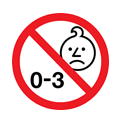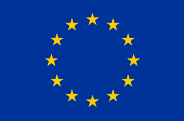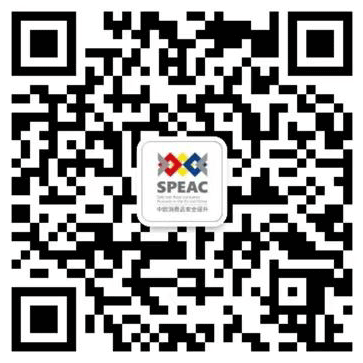
Our Frequently Asked Questions (FAQ) section, your instant knowledge base.
SPEAC Frequently Asked Questions (FAQ) section offers a comprehensive repository of the most common queries on product safety rules. Save time and find the information you need efficiently, so you can make informed decisions. No need to wait for responses; get the information you seek instantly.
Can’t Find Your Answer? Ask the expert!
While our FAQ section covers a wide range of topics, we understand that you may have unique queries. If you can’t find the answer you’re looking for, don’t hesitate to reach out to our experts using the form below. We are here to assist you and provide further assistance.
As a manufacturer, there are certain rules that need to be followed when placing a product on the market. There are some basic questions in the form of a checklist that you could create to reduce the risks of producing non-compliant and dangerous products. Ask yourself:
First and foremost, it is the manufacturer who has a primary responsibility since the manufacturer controls all key stages including design and production. Others in the chain of distribution are also required to carry out certain checks and individual EU Member States appoint market surveillance and border control officials who check to ensure the product safety rules are followed. There is no requirement to seek approval in advance before supplying products.
For the majority of products, no, as product rules have been harmonized for a number of sectors. This is indicated by the application of the CE mark as the conformity assessment ‘passport’.
Those sectors which have not been subject to harmonization legislation are regulated under general provisions, and the application of these is the same in all Member States and the principle of mutual recognition.
Detailed information can be found from the European Commission
A harmonised standard is a standard that has been acknowledged by the EU Member States to provide “presumption of conformity” with a certain directive.
This means that if a product meets the requirements of a harmonized standard, then the manufacturer can presume that his product meets (some of) the essential requirements of that particular directive.
It is not a requirement to follow a harmonized standard, however, it is usually easier to do so as other standards do not provide presumption of conformity.
In the short term the effects will be minimal, as product rules and conformity assessment will remain the same for both the UK and EU for most product groups, but the following changes have taken place:
There is the possibility that more will change in the future although this is unlikely to happen in the short term.
No. Only those products that fall under the New Approach legislation. This includes electrical products, toys, medical devices and several other product categories.
Examples of products that do not require a CE mark include child care articles, textiles and kitchenware.
The CE mark is an indication by the manufacturer of the product that they have carried out the relevant conformity assessment process and signed a ‘declaration of conformity’ to certify this for the product in question.
The CE mark is not a permit or license and is not awarded or available for purchase. It is simply the manufacturers’ own declaration that his product conforms with all applicable legal requirements and that he has followed the correct processes and procedures to verify this.
The relevant conformity assessment process will occur at the design and production phases of the product cycle and will ensure that the design specification for the product meets the relevant safety requirements under European Law, and then that there are systems in place to ensure that products consistently meet this specification.
The mark itself is a ‘passport’ for the single market, and many product groups cannot be placed on that market without it. It also ensures that products carrying the mark are not subject to further legal checks when moving from one Member State to another.
The CE mark may only be applied to products subject to European harmonization legislation, and the mark should not appear on any other products.
Such legislation provides requirements for safety, environmental impact and performance, and many products fall under more than one piece of legislation and the mark is an indication that it complies with all relevant requirements.
Examples of product groups regulated under harmonized legislation include:
You don’t have to buy CE marks anywhere. You can print them yourself using the template in regulation 765/2008, Annex II.
This will depend on the contractual arrangements that a manufacturer has with his customer in the EU.
But the European authorities can (and will) take any kind of necessary legal action against the importer of the product or in the case of online trade, against the Chinese manufacturer’s representative in the EU. This may include banning of sales or recalling unsafe products, which in turn can lead the European importer to sue the Chinese manufacturer for the losses incurred.
Technical documentation is generated by the product manufacturer to demonstrate that the conformity assessment process has taken place and is provided to the market surveillance authorities, upon request, to show that the product is safe.
The generation of, keeping and production of the technical documentation upon request is a legal requirement for products which are subject to European harmonization legislation (the laws that require CE marking). Where the manufacturer does not have a branch company within the EU, then product’s importer is required to produce the documentation to the market surveillance authority if asked to do so.
The technical documentation can be produced in any of the official EU languages. Most often it is written in English.
(Note that this is different when it comes to documentation for the user, for instance the user’s guide and warnings on the product. These must be in the language of the country where the product is sold.)
A notified body, in the EU is an organisation that has been designated by an EU Member State to assess the conformity of certain products, before being placed on the EU market, with the applicable essential technical requirements. These essential requirements are publicised in European directives or regulations. Not all EU laws require the use of a notified body. In relation to some product categories, a simple declaration of conformity by the manufacturer is sufficient.
Some products must have the design of the product approved by a specific type of test laboratory before being able to display the CE mark and be placed on the EU market. Sometimes the supervision of the notified body is also required during the production process, but this is only for certain products.
Products such as toys and electrical items do not have to be tested by an independent laboratory, but this is always a good idea to ensure that the harmonized standards which outline tests to ensure that essential safety requirements have been met at the design and production stages. A test report alone is not evidence of conformity, but it provides additional assurance that product design and production have met the relevant safety requirements.
As part of the conformity assessment process, it is essential to know the composition of component parts of the product to ensure that the final product meets legal requirements in relation to chemical safety.
The paint supplier should be prepared to deliver a Material Safety Data Sheet for the paint.
Economic operator is a broad term to describe all commercial entities (ranging from individuals to international corporations) who are involved in the supply chain for products. This can be the manufacturer, importer, distributor or authorized representative, and each has specific responsibilities in relation to the product that they supply.
When a product is placed on the EU market, the economic operator who does this takes ultimate responsibility for the safety and conformity of it. Since market surveillance is carried out by reference to technical documentation as well as the product, there must be an economic operator within the EU who holds this documentation so it can be provided to the authority upon request. Further if the product is found to be unsafe, the actions such as recalls may be necessary, and again the relevant economic operator has responsibility for this.
The EU rules covering market surveillance change in 2021. Although the rules have a wider implication, they will particularly affect those who sell their products online. It’s important to realise that the key product safety rules remain unchanged by this law.
This new regulation adds the requirement for CE-marked products to have someone present in the European Union acting as the point of contact for product compliance in other words, a responsible person (called economic operator in the law).
It will become a legal requirement to have a presence within the EU. Of course, many manufacturers may already have such a person, for example an EU subsidiary of the company or an importer. They could take on that role. Alternatively, if the manufacturer uses a testing laboratory or certification company – they may be offering such services. If none of this is applicable to particular circumstances, the fulfilment house is the only other option.
No. A certificate of conformity only shows that a test laboratory has tested the product and verified that it complies with one or more directives.
To sell a product in the EU the manufacturer has to draw up and sign an EU declaration of conformity to show that he has taken all actions required by European legislation and that he resumes full responsibility for the product.
The EU Declaration of Conformity is a document signed by the manufacturer of the product that briefly describes which legislation the product complies with and which standards the manufacturer has applied to ensure this.
It is obligatory to draw up and sign an EU Declaration of Conformity for all CE marked products that are to be sold on the EU market.
A toy is defined as a product which is designed or intended, whether exclusively or not, for use in play by children under 14 years of age. There are some specific exemptions from this definition:
There are further exemptions not listed here, but available in the Toy Safety Directive.
The question for Market Surveillance officials is always whether or not the product has been designed to have ‘play value’ which means that it appeals to children and is likely to be used in play by them. The EU recognizes the existence of ‘grey areas’ for the classification of products as toys. The Toy Safety Directive presents a non-exhaustive list of examples that are not considered as toys but that could be subject to confusion e.g. fireworks, sports equipment, puzzles with more than 500 pieces.
Anything which is neither designed and manufactured as a toy or is not suitable for use in play while being specifically child appealing is not considered a toy.
Choking on small parts of toys is only usually considered to be a significant issue for very young children, particularly those under three years old. This is because at this age they are still putting things in their mouths, and so small parts of toys may be used in this way and present a risk of choking.
The European requirements for toys safety strictly control the presence of small parts on toys designed or intended for children under the age of three, and if the toy may be attractive to this age group but is not suitable for them then it must have a warning saying that the product is unsuitable for children under three because of the presence of small parts which may present a choking hazard.
Toys must be assessed for the presence of small parts at the design stage of conformity assessment, and also during the toy safety assessment. Checks can be carried out on toys which are considered suitable for children under three years by determining whether it has any detachable parts which may fit inside a child’s mouth. If the parts are removeable using as much force as a child is likely to be able to exert, and it could fit inside a child’s mouth, then there is a cause for concern.
The technical requirements for this pull test, and the size of the part which may cause harm, are clearly defined in the harmonized standard EN 71 on toy safety.
The manufacturer is either the maker of the product, or the person who has the product made and applies their name or trademark to it for the European market. This means that a factory in China may not actually be the manufacturer if the person who has the product made, owns the brand and creates the specification is based within the EU.
Toys must carry the CE mark in the correct form (subject to some minor exceptions relating to size) which is at least 5mm high but must also be labelled with the following:
Any warning which may determine the decision to buy a toy (for example age warnings).
Any product which is intended or designed for use in play by people under the age of fourteen years is legally defined as a toy, and as such must meet the safety and conformity assessment requirements set out in the Toys Safety Directive.
Children under 3 are considered to be vulnerable consumers and therefore very specific safety requirements are applied to products intended for them. Children between the ages of 3 and 14 are considered to be vulnerable consumers, and so there are still enhanced safety requirements for products intended for them, but they are not as strict as those for products for younger children.
Specific hazards which are addressed for very young children include those which arise from putting the product in the mouth and not being able to recognize when a toy has become unsafe because it is broken. Toys for older children will still be subject to unpredictable behavior and so must not present any hazards which could cause injury to children during foreseeable play.
User limitations must contain at least the minimum or maximum age of the user.
Manufacturers may choose between a warning phrase or pictogram (or both):
‘Warning – Not suitable for children under 36 months’

The contact information about the EU representative should be marked on the product, the product’s packaging, the parcel or an accompanying document.
The distinction between the manufacturer’s information and the EU representative’s information could be achieved by adding the word “Manufacturer:” before the manufacturer’s contact information and the word “EU representative:” before the EU representative’s contact information.
Protruding parts are not prohibited. However EN 71-1 provides that such protruding parts should be protected. The size and shape of the end protection has not been stipulated, except for toy scooters, but the end protection should be given a sufficiently large surface area to avoid puncturing of the body.
The Toy safety Directive provides for an obligation for the Member States to lay down rules on penalties for economic operators in case of infringements of the national provisions adopted to transpose the Directive. These penalties may include criminal sanctions in case of serious
infringements. The penalties applied are provided for each Member State of the EU in the respective national legislation, they can therefore vary across the EU.
According to the Toy Safety Directive the warnings should be in the national language, as determined by the Member State. Moreover manufacturers shall mark the warnings in a clearly visible, easily legible and understandable and accurate manner on the toy, on an affixed label or on the packaging and, if appropriate, on the instructions for use which accompany the toy.
The SPEAC Academy is a web-based library of learning materials designed to help the business community supply safe products to the EU single market.
The SPEAC Finder is a valuable web-based resource as it brings together official information on product safety legislation, standards, and guidelines in a user-friendly manner.

This website was created and maintained with the financial support of the European Union. Its contents are the sole responsibility of SPEAC project and do not necessarily reflect the views of the European Union.
